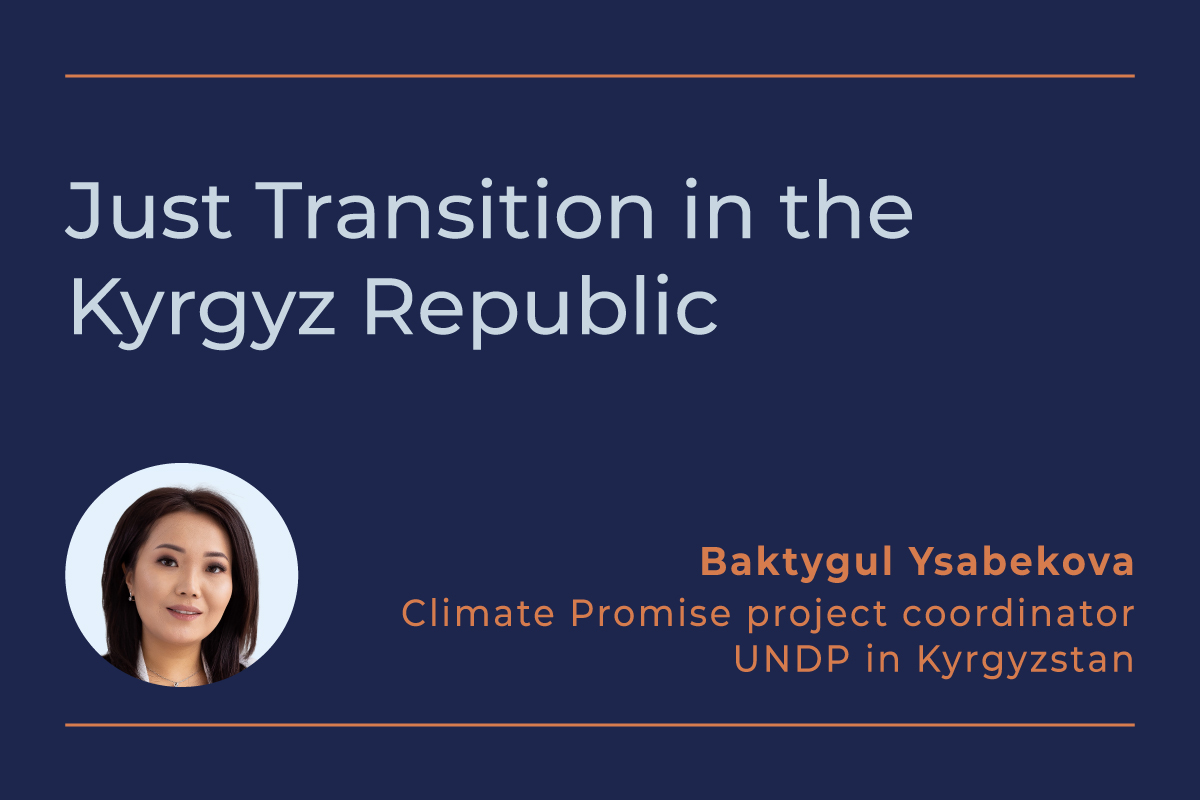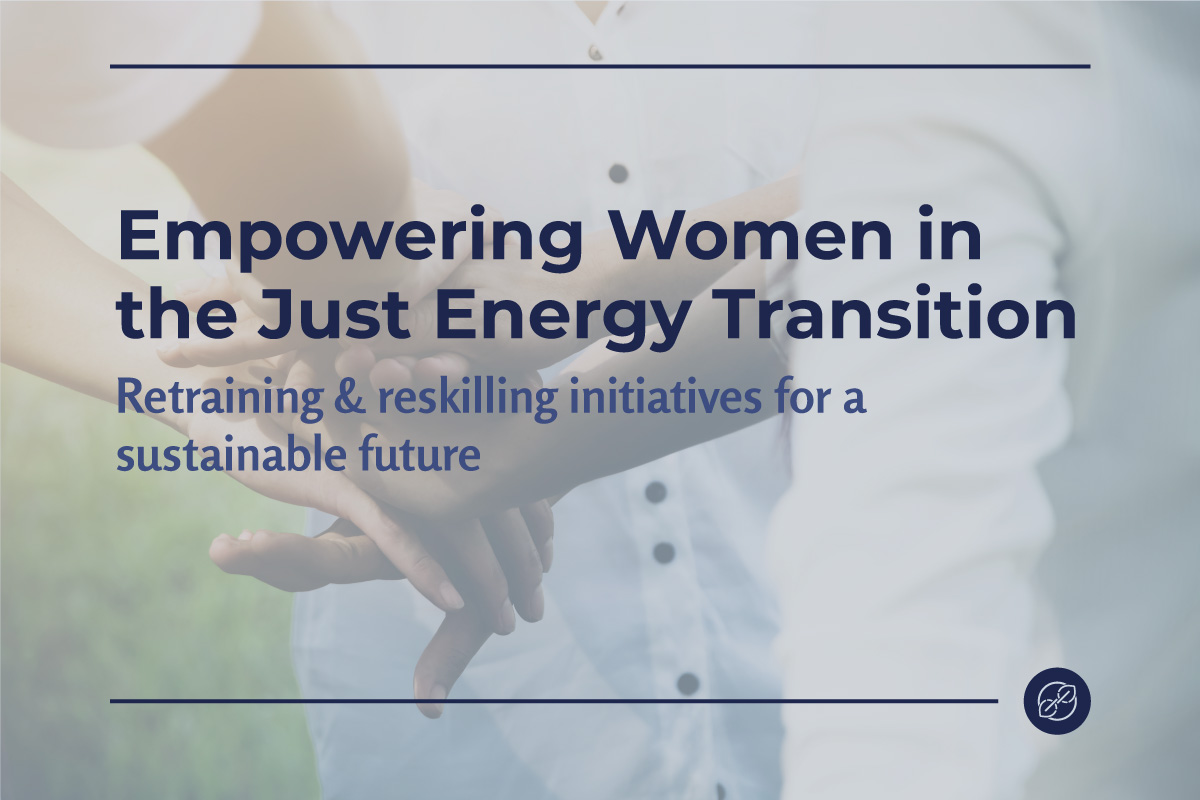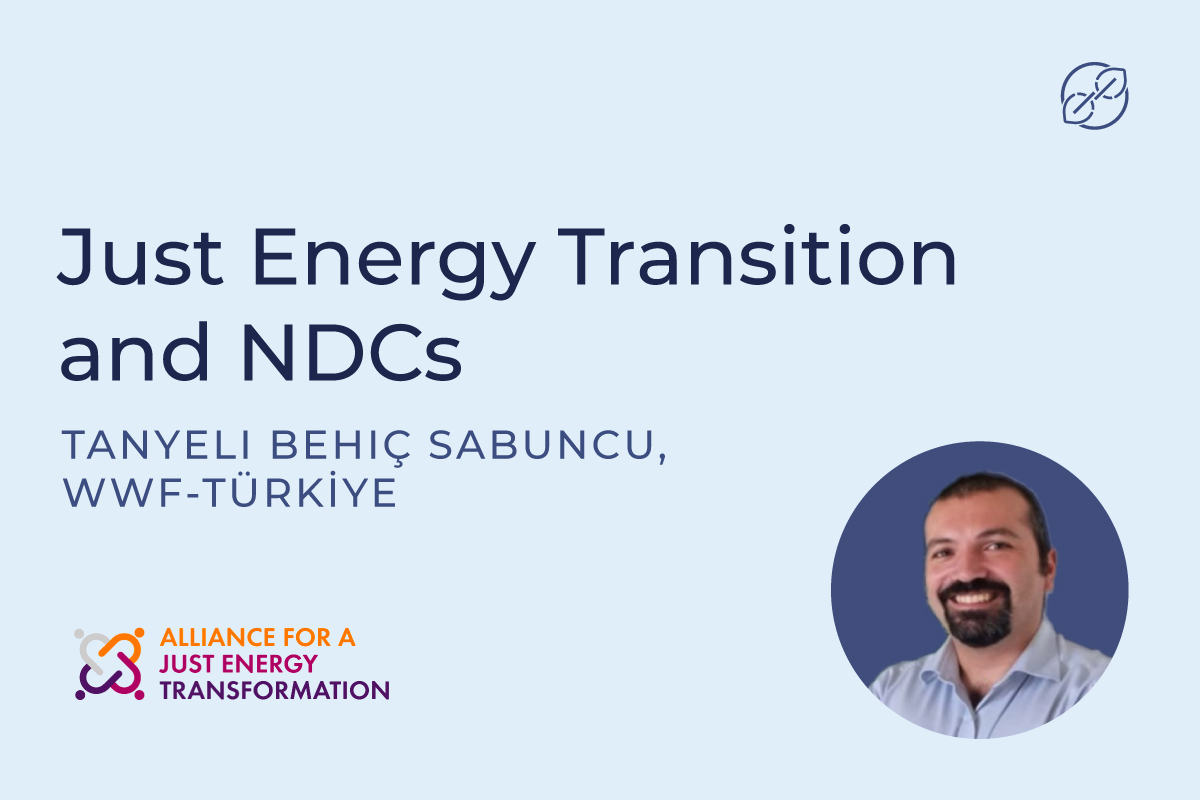Background
UNDP is supporting Kyrgyzstan to investigate the nature of its just transition process and identify opportunities for timely and meaningful mobilization. Neyen is currently conducting an assignment that aims to provide support to UNDP and the Government of Kyrgyzstan towards conceptualizing a just transition in the Kyrgyz context through a Just Transition Readiness Assessment.
The Global Climate Promise Initiative
We had the opportunity to speak to Baktygul Ysabekova, Climate Promise project coordinator, UNDP in Kyrgyzstan. We asked her about the project and the initiative to ensure a just transition in the Kyrgyzstan context. So let’s dive into the Q&A.
QUESTION: Can you provide an overview of the primary goals and objectives of the project in Kyrgyzstan?
The primary goals of the Just Transition Readiness Assessment project in Kyrgyzstan is to support the Government of Kyrgyzstan (GoK) towards conceptualizing a just transition in the Kyrgyz context through a Just Transition Readiness Assessment.
Through this assignment, the GoK will:
- Be aware of the gaps and opportunities for a just transition in the country.
- Be equipped with approaches to a just transition aligned with the demands, priorities, and realities of the Kyrgyz context.
- Have a deeper understanding of its just transition landscape.
Q: Although Kyrgyzstan’s NDC does not explicitly mention “just transition,” it adheres to a global commitment of “leave no one behind”. Why is it important to explicitly incorporate just transition in NDCs and LT-LEDS?
Incorporating just transition explicitly in NDCs and LT-LEDS is crucial for several reasons:
- Ensures Inclusivity: It guarantees that the transition to a low-carbon economy is inclusive, addressing the needs of all segments of society, especially the most vulnerable.
- Mitigates Social Risks: By planning for just transition, potential social and economic risks associated with decarbonization, such as job losses in fossil fuel industries, can be mitigated.
- Enhances Policy Coherence: Explicitly including just transition principles ensures coherence between climate action and social policies, promoting a holistic approach to sustainable development.
- Builds Public Support: Transparent and inclusive transition planning can increase public buy-in and support for climate policies.
- Aligns with Global Best Practices: It aligns national policies with global best practices and commitments under the Paris Agreement, enhancing international cooperation and support.
Q: The energy sector (including transport) is the largest emitting sector contributing around two-thirds of the country’s GHG. The government is focusing most of its effort on this sector, as per the NDC. What are the main transformation actions required in the energy sector to promote a low carbon economy?
Q: What opportunities for jobs and, specifically for women, do you think this sectoral transformation can bring?
The sectoral transformation in the energy sector can bring numerous job opportunities, particularly for women:
- Renewable Energy Jobs: Creation of new jobs in the renewable energy sector, including installation, maintenance, and operation of renewable energy systems.
- Energy Efficiency Services: Opportunities in the energy efficiency sector, such as energy auditing, energy management, buildings retrofitting, and manufacturing of energy-efficient products, technologies and equipment.
- Green Technology and Innovation: Jobs in research, development, and deployment of green technologies and innovative solutions.
- Capacity Building and Training: Employment in training and capacity-building programs to equip the workforce with skills needed for the low-carbon economy.
- Entrepreneurship: Encouragement of female entrepreneurship in the green energy sector through targeted support and funding programs.
- Support Services: Jobs in support services, such as project management, policy development, and community engagement.
Q: Turning to the potential negative impacts on society and the economy, what are the ones that you think are most relevant?
The most relevant potential negative impacts on society and the economy include:
- Job Losses: Potential job losses in traditional fossil fuel industries, leading to economic instability for affected workers and communities.
- Economic Disruption: Short-term economic disruption as industries and markets adjust to new low-carbon technologies and practices.
- Energy Access and Affordability: Challenges in ensuring that the transition does not compromise energy access and affordability, especially for low-income households.
- Social Inequities: Risk of exacerbating social inequities if vulnerable groups are not adequately supported during the transition.
- Infrastructure Costs: High upfront costs for developing new infrastructure and retrofitting existing systems, which may strain public and private finances.
Q: The agricultural sector is the next biggest emitter, accounting for almost 25% of all GHG. The discourse around just transition is often framed around the energy sector only. What challenges do you think the transformation of agriculture towards more sustainable practices brings to Kyrgyzstan and what are the key support measures to minimize those impacts?
The transformation of agriculture towards more sustainable practices in Kyrgyzstan brings several challenges:
- Technological Adoption: Difficulty in adopting new, sustainable agricultural technologies and practices, particularly for smallholder farmers.
- Economic Viability: Ensuring that sustainable practices are economically viable and do not reduce agricultural productivity or farmers’ incomes.
- Knowledge and Skills Gap: Lack of knowledge and skills among farmers to implement sustainable practices effectively.
- Access to Finance: Limited access to finance for investing in sustainable agricultural technologies and practices.
- Market Access: Ensuring that sustainably produced agricultural products have access to markets and fair pricing.
Key support measures to minimize these impacts include:
- Raising Awareness and Capacity Building: Training and educating farmers on sustainable practices and technologies.
- Financial Support: Providing financial incentives, subsidies, and access to credit for farmers transitioning to sustainable practices.
- Research and Development: Investing in research to develop and disseminate locally appropriate sustainable agricultural technologies.
- Market Development: Creating and supporting markets for sustainably produced agricultural products.
- Policy and Institutional Support: Developing policies and institutions that support sustainable agriculture and provide necessary resources and infrastructure.
- Stakeholder Engagement: Engaging all stakeholders, including farmers, communities, and private sector, in planning and implementing sustainable agricultural initiatives.
Q: What steps are being taken to include stakeholders in the just transition process, including underrepresented or vulnerable groups
Stakeholder engagement will initiate with stakeholder mapping, which will have the following purposes:
- to identify the target groups and institutions in the public and private sectors to be consulted as part of the execution of this assignment. This will inform on the preparation of an engagement plan for conducting social dialogue for this assignment.
- to identify the roles of different institutions in the public and private sector that can be mobilized in future just transition efforts. Understanding the roles of existing institutions will assist in developing recommendations regarding the activities that they would need to carry out in advancing just transition in the country. Many of these institutions, if not all, are expected to be the same as those identified for the purpose elaborated above.
- to identify vulnerable stakeholders that can be impacted by Kyrgyzstan’s net-zero activities. These stakeholders will be identified as part of a value chain mapping of sectors that are to be transformed as part of Kyrgyzstan’s net-zero activities. Impacts on these stakeholders—both positive and negative—can then be assessed.
Stakeholder consultations will serve three main purposes:
- Increase awareness and capacities for a just transition. Consultations with a wide range of stakeholders in Kyrgyzstan provide an opportunity for the project team to increase awareness of the concept of a just transition, why it is important, and how it can be implemented in the country. As many of these stakeholders are also expected to take part in future just transition efforts, their understanding of a just transition will be advantageous. The project concept note developed for this assignment can also be circulated as supplementary teaching material.
- Gather data for the assessment. Data and information about Kyrgyzstan’s net-zero activities and socio-economic landscape will be needed to carry out a just transition readiness assessment. While some of these may be available online, consultations with relevant stakeholders can reveal more key information that can enrich the assessment.
- Inform about findings from the assessment. In addition to increasing awareness of the overall concept of a just transition, stakeholder engagement will provide details about the premise and objectives of the present assignment. As the assignment proceeds and yields findings, stakeholder engagement can incorporate the dissemination of these outcomes.




